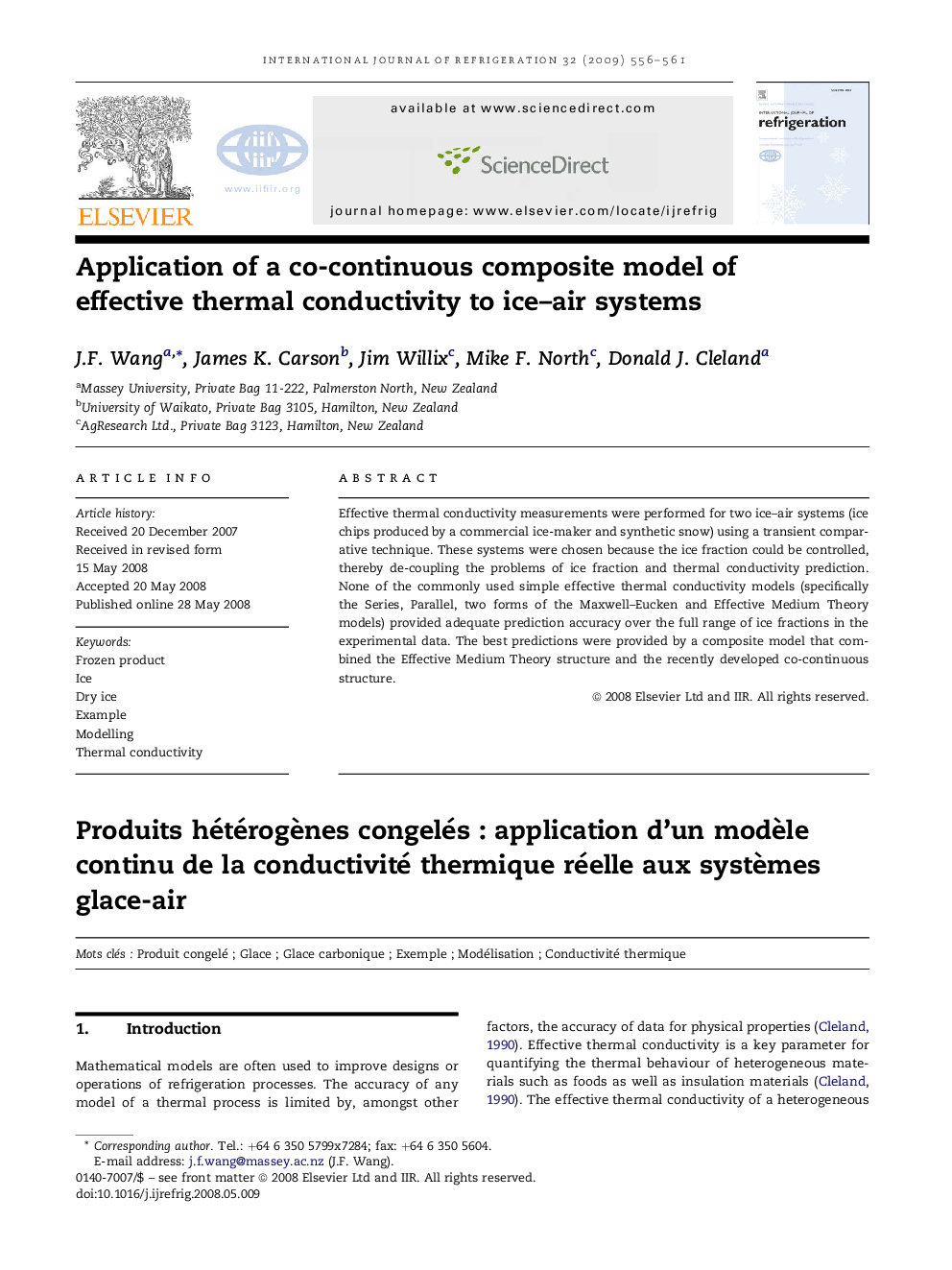| Article ID | Journal | Published Year | Pages | File Type |
|---|---|---|---|---|
| 792838 | International Journal of Refrigeration | 2009 | 6 Pages |
Effective thermal conductivity measurements were performed for two ice–air systems (ice chips produced by a commercial ice-maker and synthetic snow) using a transient comparative technique. These systems were chosen because the ice fraction could be controlled, thereby de-coupling the problems of ice fraction and thermal conductivity prediction. None of the commonly used simple effective thermal conductivity models (specifically the Series, Parallel, two forms of the Maxwell–Eucken and Effective Medium Theory models) provided adequate prediction accuracy over the full range of ice fractions in the experimental data. The best predictions were provided by a composite model that combined the Effective Medium Theory structure and the recently developed co-continuous structure.
